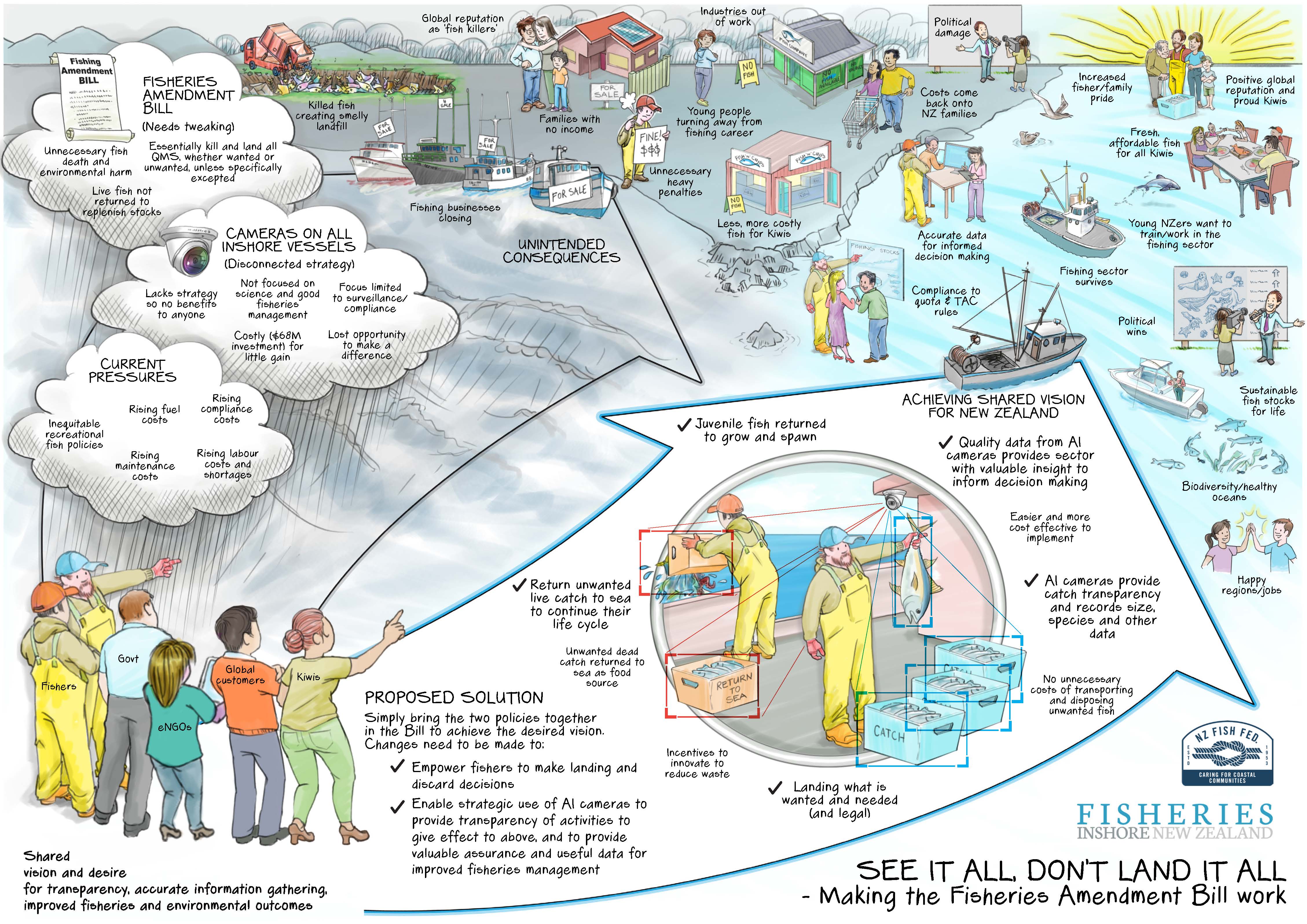The Fisheries Amendment Bill 2022
The Fisheries Amendment Bill amends the Fisheries Act (1996) and is part of the Government's wider fisheries reform programme.
Fisheries Inshore New Zealand made submissions on the draft Bill (passed in late October 2022) and is engaging with the Ministry of Primary Industries to help refine regulations and operational guidelines.
The amended Act came into force on 1 November 2022 but this does not mean an immediate change for fishers. Many aspects of the Act are given effect through regulations and other instruments such as Notices, many of which will transition over a 4-year period.
The Act will change existing rules and policies by:
- strengthening the commercial fishing rules relating to the landing and discarding of fish
- introducing new graduated offences and penalties, including an ability to put in place an infringement regime for less serious offences and a system of demerit points
- streamlining the adjustment of recreational management controls
- enabling the further use of on-board cameras
- creating a new defence to help save marine mammals and protected sharks and rays.
Read more about the Act [Ministry for Primary Industries website]
Fisheries Inshore New Zealand's submissions to the Bill
In its June 2022 submission to the proposed amendments, Fisheries Inshore New Zealand's made recommendations about:
- Landings and returns
- Offences and penalties
- Pre-set decision rules
- Making the bill and Act fit for purpose
The roll-out of onboard cameras
Fisheries Inshore made a joint submission with Southern Inshore Fisheries in December 2021 about Fisheries New Zealand's proposal to invest $68m investment, with annual operating costs of $10m, to put cameras on inshore vessels for catch surveillance and increased transparency.
This was a standalone consultation and is mandated in the Act, through the Fisheries Amendment Bill. Read our submission.
See it all, don't land it all
Through the consultation period and during sustained engagement with government leaders, Fisheries Inshore New Zealand presented the overarching proposal that fishers and the monitoring and enforcement agencies should 'see it all, not land it all'.
This is in reference to the potential for onboard cameras and artificial intelligence technology to determine what fish species are being caught, landed and discarded. If the government can 'see it all' why do fishers need to 'land it all'?
To help communicate this proposal we produced an infographic and corresponding video.
Watch the 3-minute 'See it all, don't land it all' explainer [Vimeo website]

